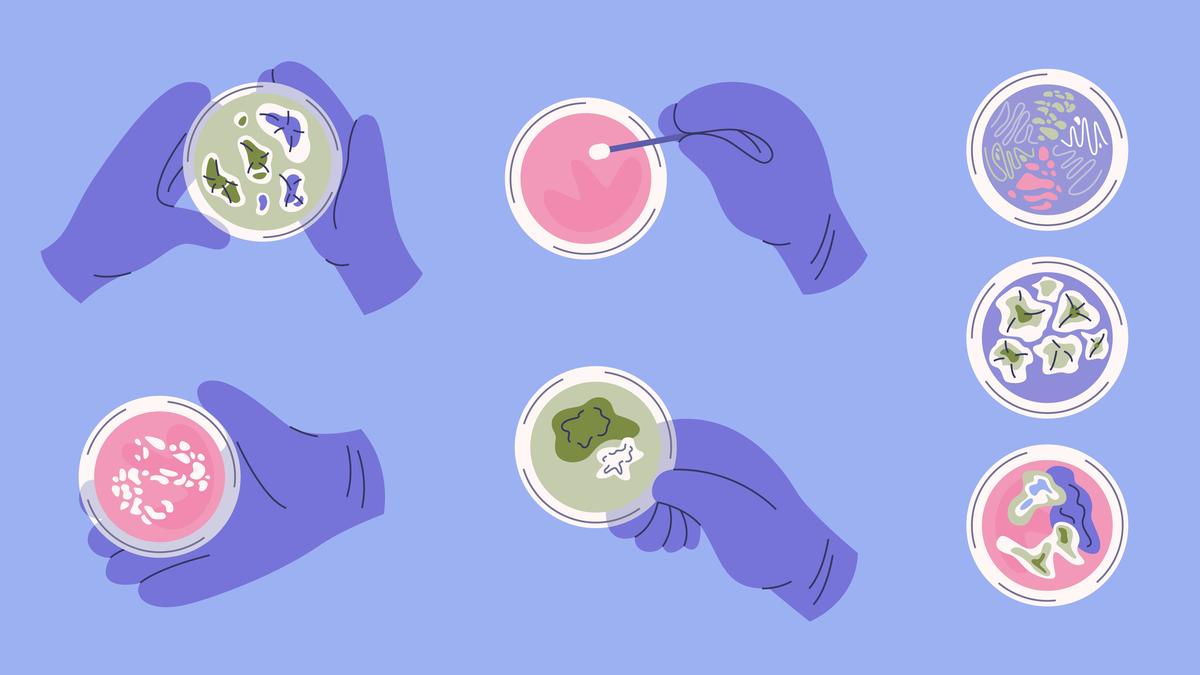Candida tropicalis is an important fungal pathogen in India and many parts of the world. Its infections are associated with a mortality rate of 55-60%. Anti-fungal drugs called azoles, such as fluconazole and voriconazole, are used to treat its infections. But there is a growing concern in medical circles that clinics are seeing an increasing number of infections by strains of C. tropicalis that exhibit high resistance to these drugs. What is driving this alarming increase in drug resistance?
A paper published recently in PLoS Biology by researchers from Fudan University in Shanghai has provided the answer. They found that an azole-related fungicide called tebuconazole widely used by farmers and gardeners, and which can accumulate and persist in the environment has driven the increase in azole-resistant C. tropicalis infections seen in clinics.
The team also found that tebuconazole-resistant strains exhibited aneuploidy — meaning their chromosome number showed differences from the normal chromosome count for the organism. Such deviation from the normal chromosome complement is known as ploidy plasticity.
Deviating from normal ploidy
In the human body, most cells have two sets of the genome: thus they are diploid. One set of 23 chromosomes comes via the father’s sperm and the other set of 23 from the mother’s egg. When we, in turn, make eggs or sperm, a process called meiosis ensures only one set of chromosomes each of the 23 pairs is transmitted to them. Eggs or sperm are the only haploid cells in us — meaning they each have one copy of the genome. When a sperm fertilises an egg to make the zygote, diploidy is restored. The zygote then develops into the baby.
On rare occasions, meiosis isn’t as efficient and produces sperm or eggs that contain one copy more or one copy less of one or more chromosomes. Such eggs and sperm are said to be aneuploid. Aneuploidy can have serious consequences.
A zygote with three copies instead of two of the smallest chromosome leads to the development of Down syndrome. These individuals have delayed development, characteristically aberrant physical features, and mild to moderate intellectual impairment. Aneuploidy for any of the other chromosomes almost invariably ends in prenatal death. In short, humans don’t tolerate ploidy plasticity well — nor do most other animals, plants, and fungi,
For a long time, C. tropicalis was also thought to be a diploid organism. Thus, finding that in most tebuconazole-resistant strains the ploidy was altered surprised the researchers.
Enhanced resistance to anti-fungals
The team started with five different C. tropicalis strains that were susceptible to tebuconazole and also to clinically-used fluconazole and voriconazole. They exposed the strains to incrementally more tebuconazole concentrations from 0.125 to 16 micrograms/millilitre in liquid medium, then grew them on tebuconazole-containing semisolid media in Petri plates. Finally, they picked 35 tebuconazole-resistant colonies. All these colonies exhibited cross-resistance to fluconazole and voriconazole.
The tebuconazole-resistant strains showed slower growth than their progenitor strains in the absence of antifungals. But in the presence of antifungals, they grew much better. It seems the resistant strains had traded cell growth for antifungal resistance.
The researchers found that the ploidy of tebuconazole-resistant strains ranged from haploid to triploid (that is, three copies of the genome). Those identified as diploid or close to diploid were found by more detailed analyses to, in fact, be segmental aneuploids: they carried duplications or deletions of some chromosome segments.
The duplicated chromosome segments carried genes whose overexpression was known from other studies to increase resistance to azoles. For example, several TBZ-resistant strains had duplications of a chromosomal segment carrying a gene named TAC1, which encodes a protein that helps the cell to produce more of another protein named the ABC-transporter. The ABC-transporter pumps toxic compounds such as the azoles out of the cell.
Conversely, other segmental aneuploids showed haploidisation, that is, deletion of one copy of a segment of another chromosome that carried the HMG1 gene. The overexpression of HMG1 decreased the biosynthesis of a chemical in cell membranes named ergosterol.
Previous studies had shown that in budding yeast, HMG1 overexpression led to lower synthesis of ergosterol and a lower resistance to fluconazole — whereas reduced expression of HMG1 stimulated ergosterol synthesis and elevated resistance to fluconazole. Thus, although the aneuploidies created imbalances in the C. tropicalis genome that reduced their growth rate, they enabled the strains to better resist antifungals.
The researchers also verified that the strains with altered ploidy were more virulent than the progenitor strains in mice treated with fluconazole.
An unanticipated haploid
Another unexpected bonus from the new study was the discovery that tebuconazole-resistant strains included stable haploid strains of C. tropicalis. The haploid cells were able to undergo mating. These serendipitous findings now provide researchers a useful tool for future genetic analyses.
The researchers recovered a haploid cell from among the tebuconazole-resistant strains generated in the laboratory. They wondered whether any of the 868 C. tropicalis strains recorded in clinical visits around the world might include any haploids (that is, naturally haploid rather than as an abnormality). They examined publicly available genomic sequences of these strains and found that two of them, isolated from Spain, were indeed haploid.
In conclusion, the research showed that the reckless use of triazole antifungals in agriculture can unwittingly promote the emergence of pathogenic strains showing cross-resistance to azoles of clinical importance. Further, some of the resistant strains were haploid, like our sperm and egg cells, and could likewise mate and hence be capable of introducing their resistance mechanisms into new genetic backgrounds.
This exemplifies the prophetic warning: “sow the wind, reap the whirlwind”.
D.P. Kasbekar is a retired scientist.
Published – June 25, 2025 08:30 am IST
